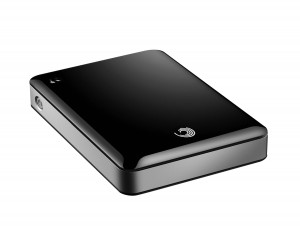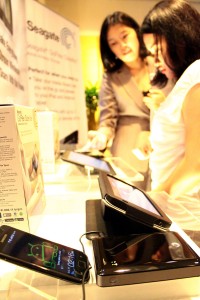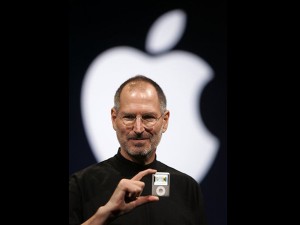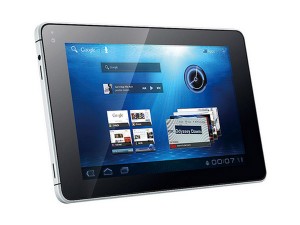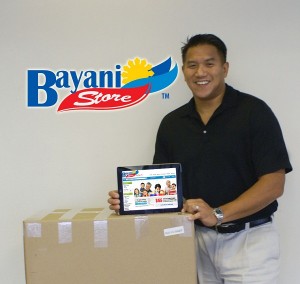Dante M. Velasco Ph.D. Contributor
Philippine Daily Inquirer
7:21 pm | Saturday, October 15th, 2011
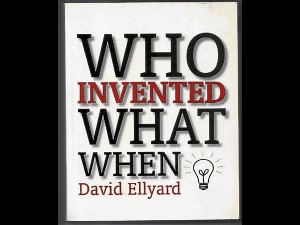
I
was writing a speech for a top public official, and it occurred to me
that I would illustrate his subject with the value of inventors and
inventions to society – and so I looked for a few examples.
My first example was
Thomas Edison, who had thousands of patents to
his name, and who had the executive and marketing ability to sell and
manufacture his inventions.
Then I recalled that I bought a book about inventions, looked for it –
and, yes, the book, all of 320 pages, proved to be a treasure trove of
inventions in Planet Earth.
The book is aptly titled, “Who Invented What When,” which thus
promises that it has a list of noted inventors, a gallery of
earth-shaking or earth-saving inventions, plus useful and interesting
accounts about when every invention began and when such invention “saw
the light of day and the color money” (my words).
“
Seeing the light of day” means the invention had promptly or
belatedly been recognized as a useful invention, and the “
color of
money” tells us if such a created device made money for the inventor,
made a millionaire for the “intellectual thief” – or established a
multimillion enterprise for the capitalist!
There were sad cases when the inventor died a poor man, while the
invention had to wait for market acceptance or for some innovations that
will qualify it for mass production.
Who invented the paper clip
“Who invented the paper
clip?”
is a question invariably asked when talks shift to inventions. I
thought this book did not bother with such a simple twisted wire, but I
checked the index anyway – and, lo and behold, the account is on page
130 of the book, lumping it with two other important inventions – which
explains the title: “The Staple, the Paperclip and the Safety Pin.”
The paper clip inventor, in turns out,
was Norwegian inventor Johan
Vaaler, who secured a patent in 1899. The book however clarifies that
the paper clip that we know now is described by author Ellyard as
“double oval Gem model” devised by an English firm also in 1899. Read,
too, the interesting account of the safety pin, which the author wittily
says, “usually holds things other than sheets of paper.” We all know
that safety pins have many ways of holding garments covering the human
anatomy.
What about the most outstanding invention of all time in human
history – the microchip?
The book credits the development of the “logic
chip” to Intel, holder of the patent on the integrated circuit. Intel
was asked by Japanese manufacturer Busicom to make a set of integrated
circuits to power hand-held calculators.
The
job
fell on the lap of Employee 12 of Intel, Marcian “Ted” Hoff. With the
help of Stan Mazor, Hoff designed what would then become the
“microprocessor” or “central processing unit.” The legendary 4004 chip
was launched by Intel in 1971. Other companies had their own
innovations in the microchip.
Impact on lives
There are more than 200 inventions in this book, so
selected by the
author with one criterion: They had impact on people’s lives for the
last half of a millennium.
“
I concentrated on technologies that have made a real impact on you,
on innovations rather than just inventions,” Ellyard says in his
introduction.
One that has made quite an impact, especially on the young, is the
MP3, which the author describes as “more music in less space.” MP3 is
shorthand for MPEG1 Audio Layer 3.
And MPEG means Moving Picture Expert
Group. “Unlike a CD player,” Ellyard adds, “and MP3 player has no moving
parts; the data is embedded in a microchip.
Frequently mentioned in the book is
Moore’s Law, but is not explained
in the book. I checked such a law on the Internet – and here’s the law:
“
The number of transistors and resistors on a chip doubles every 18
months.” More information stated that Gordon Moore made this comment in
1965 – and proving Moore to be accurate, Intel placed 1.7 billion
transistors on its titanium chip.
We will not bother our readers with more IT discoveries and products,
and yet it is enough to say that this book gives us one- or two-page
accounts of the inventions – and these are “leads” to other sources for
details of such technological breakthroughs.
Some inventions were products of serendipity.
One is seeking a
solution to something, and then another invention comes out of the
experimentation and re-experimentation. The book says: “
No one was
asking for e-mail when it was devised.
Some inventions are, at least
initially, solutions in search of a problem –the laser for one.
Radar in
Britain began as a “death ray.”
This book also makes distinctions about inventions that somehow are
credited to one scientist when it was another inventor who came up with
it. We have assumed that Edison, for example, invented the device to
harness direct current (DVC) and alternating current (AC).
Only the other day, lawyer Arnel Casanova (now CEO of Bases
Conversion and Development Authority) said that
the inventor of the AC
was Croatian-born Nicolas Tesla.
I checked this book, and the account
relates that Edison and Tesla disagreed fundamentally over electricity,
with Edison committed to DC and Tesla to AC. It turned out Tesla’s AC
was simpler. Read about the resulting rivalry between General Electric
and Westinghouse, one committed to DC while the other to AC. Well, in
this country, there is also this debate on the “AC-DC,” but that is
another matter altogether!
Naturally curious
This book will be interesting to the naturally curious creatures,
wanting to know every development about and achievement of the
individual. This is actually a sequel to Ellyard’s earlier book, “Who
Discovered What When.”
This book will also prove handy to speechwriters who want to spice up
a speech on human ingenuity, to professors or teachers who want to
impress their students about the wealth of information at their
fingertips. Or, this book will be useful to people who will realize that
Steve Jobs, an impressive inventor, has predecessors back into the last
500 years.
This brings us to the next question: What happens into the next half
millennium? The author has a quick answer: There will be “new and
better solutions to our needs.”
“
Better” more compact, safer, more convenient or user-friendly, more efficient, using fewer resources, less polluting.
Costs will continue to fall. Gadgets, which were once expensive, will
be cheap decades later. Read about the
invention of the cellular phone,
which the author identifies as “talking while walking.”
When the
prototype of the cellphone burst into the scene, “it was the size of a
brick and weighed a kilogram,” notes the author.
The cellphone prototype is “far short of today’s mobiles that weigh 100 grams or less and able to slip into a pocket.”
I have a cellphone with so many functions that I really could not
use. This is the trend, says the author, adding,
“There will be fewer
devices but more functions in the ones we have.”
The microchip
We earlier talked about the microchip. The book says, the chip will
contain much more data than we can ever imagine. Consider this trend
that will be true well into so many decades.
The trend of
“microminiaturization (or now the nanominiaturization) of processors and
memories – that cram ever more components – have fallen from about 1000
nanometers (millionths of a millimeter) to around 50 nanometers over
several decades.
The number of transistors on a single chip will shortly pass a
billion and may reach 10 billion the next decade. Memory sticks will
hold as much data as today hard drives.
Driven by advances in optic fibers, lasers, LEDS and other optical
devices,
IT will be increasingly transformed by “photonics.” This is the
use of light in place of electric currents and charges to process,
store, and transmit information.
These will continue the twin trends
of lower costs and greater capacity. (Remember, “photo” as in
photosynthesis, using the sun, and “photo” as in photograph using
light?)
Our constant worry about inventions was once expressed by John F.
Kennedy in his memorable inaugural address, when he said that our
invention of “the instruments of war have far outpaced the instruments
of peace.”
The good news is in the technological forecast of Ellyard, the book
author. On the future of inventions and innovations in medical
treatment, he predicts that “medicine for prevention, diagnosis and
therapy will continue into advance, driven by biotechnology,
surgical techniques, monoclonal antibodies, medical electronics and nuclear medicine (which is the use of radioactive materials).”
Yes, octogenarians,
they will result in increasing life
spans and healthier old age – especially with implantable hearts,
pacemakers and hearing devices. These may well be joined, according to
the author, by implantable artificial kidneys, pancreases (to deal with
diabetes) and vision aids.
No doubt, the world is better off. Our lifespans are longer, our
existence is more comfortable. Pain can be dealt with by pain
relievers, and insomnia can be solved by sleeping pills. One friend of
mine, however, told me that there must be an invention that will deal
with heartaches, and one that can give us peace of mind. Another friend
said that this has been available since 2,000 years ago.
(dmv.communications@gmail.com)
http://business.inquirer.net/24949/from-paper-clip-to-microchip

